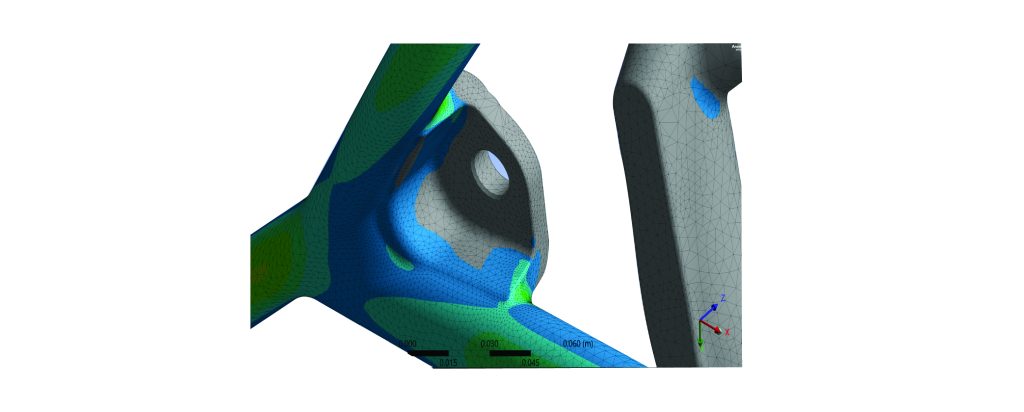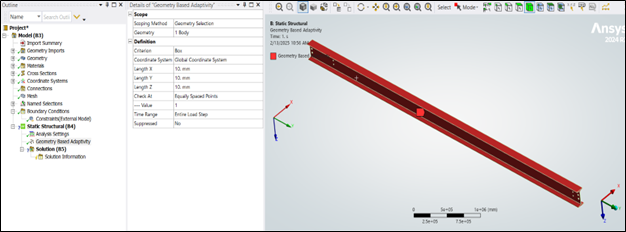
Finite Element Analysis (FEA) is a powerful numerical method used to solve complex engineering problems involving intricate geometries, varying loading conditions, and boundary constraints. In FEA, a continuous domain is discretized into smaller finite elements, a process known as meshing. The accuracy of simulation results largely depends on how well the mesh captures the geometric features and maintains element quality.
To address these challenges, Geometry-Based Adaptivity in FEA provides an efficient way to automatically refine the mesh during solving, ensuring optimal accuracy while minimizing computational costs. This feature intelligently adjusts the mesh to better capture topological details without requiring excessive manual intervention.
Adaptivity in FEA involves dynamic mesh refinement during the solution process to improve accuracy. It uses an iterative feedback mechanism that updates internal mesh parameters either discretely or continuously, ensuring convergence and precision.
This technique helps reduce convergence issues in nonlinear analyses caused by element distortion. It remeshes the model based on initial mesh boundaries, meaning that a fine mesh is required from the start to capture geometric details.
Unlike the Nonlinear Adaptive Region, which remeshes within the initial mesh structure, Geometry-Based Adaptivity creates new nodes and elements along the actual geometry boundaries. This eliminates the need for an initial fine mesh, significantly reducing computational overhead while improving accuracy.

Fig. 1 Geometry Based Adaptivity in Ansys Mechanical
Ee≥c1*ETotal/NUME

Fig. 2 Geometry based adaptivity utilization
By automatically adjusting element density based on energy concentration and geometric features, this approach ensures that simulations are both accurate and computationally efficient. As industries continue to push the limits of engineering complexity, Geometry-Based Adaptivity will remain a crucial tool for achieving high-fidelity simulations without excessive computational costs.